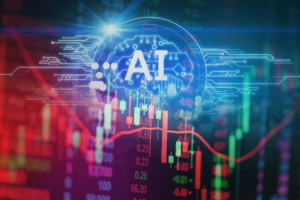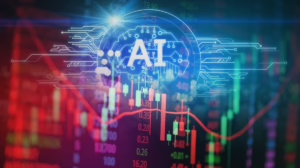The Heart of AI: Exploring the Core Meaning of Artificial Intelligence
Artificial Intelligence (AI) has become a buzzword across industries, academics, and everyday conversations. Despite its omnipresence in various applications—from virtual assistants to predictive analytics—many remain puzzled about its core essence. This article aims to dissect the core meaning of AI, its implications for society, and the philosophical questions surrounding its existence.
Understanding AI: Definitions and Scope
What is AI?
At its core, Artificial Intelligence refers to the simulation of human intelligence processes by machines, particularly computer systems. These processes include learning (the acquisition of information and rules for using it), reasoning (using rules to reach approximate or definite conclusions), and self-correction. According to John McCarthy, one of the founders of AI, it is the “science and engineering of making intelligent machines”[^1].
Types of AI
AI can generally be categorized into three types:
-
Narrow AI (Weak AI): Systems designed and trained for a specific task, such as voice assistants (e.g., Siri or Alexa) or recommendation engines (like those used by Netflix or Amazon).
-
General AI (Strong AI): Machines that possess the ability to understand, learn, and apply intelligence across a broad range of tasks, similar to a human. Such technology remains largely theoretical and has not yet been realized.
-
Superintelligence: A hypothetical stage where an AI surpasses human intelligence. This concept raises significant ethical and existential questions about control and safety.
The Core Principles of AI
Learning Algorithms
Machine learning is perhaps the most prominent branch of AI. This involves training algorithms on vast datasets to enable them to make predictions or classifications. For example, neural networks, inspired by human brain structures, mimic the way neurons communicate, allowing machines to learn patterns and make decisions[^2].
Natural Language Processing (NLP)
NLP empowers machines to understand and interpret human language, facilitating interactions between humans and computers. Applications include chatbots, language translation services, and sentiment analysis tools[^3].
Robotics and Automation
Robots equipped with AI capabilities can perform tasks in industries like manufacturing, healthcare, and logistics. These robots can learn from their environment, adapt to new tasks, and even collaborate with humans[^4].
Societal Implications of AI
Transformation of Industries
AI has the potential to revolutionize entire industries. In healthcare, for instance, AI can analyze patient data to predict diagnoses and recommend treatments, thereby improving patient outcomes[^5]. In finance, AI algorithms can detect fraudulent transactions in real time, thereby safeguarding assets.
Job Displacement vs. Job Creation
One of the most contentious debates around AI revolves around employment. Many fear that automation will displace jobs, particularly in sectors like manufacturing and retail. However, others argue that AI will also create new job categories that we cannot yet envision, much like the IT boom did[^6].
Ethical Considerations
With great power comes great responsibility. The deployment of AI raises ethical concerns, including data privacy, algorithmic bias, and the moral implications of autonomous weapons. Questions about accountability—particularly in scenarios where AI makes decisions affecting human lives—are paramount[^7].
Philosophical Dimensions
AI prompts philosophical inquiries about what it means to be intelligent or conscious. Can machines be considered “intelligent” if they operate solely based on data and algorithms? Some argue that true intelligence encompasses emotions, social interactions, and ethical considerations[^8].
The Future of AI: Possibilities and Pitfalls
The Quest for General AI
Researchers are actively pursuing General AI, a form of artificial intelligence that can perform any intellectual task that a human can. Achieving this could lead to unprecedented advancements but also poses significant risks—such as loss of control over autonomous systems[^9].
AI in Governance
AI technology can assist in policymaking by analyzing large datasets to predict social outcomes based on various policy scenarios. However, this raises questions about transparency and the role of human judgment in governance[^10].
The Human-AI Collaboration
The future may not be a zero-sum game between humans and AI but rather a collaborative partnership. Recognizing the strengths and weaknesses of both can lead to innovative solutions tailored for unique challenges[^11].
Conclusion
The heart of AI is multifaceted, intertwining technology, society, and philosophy. As we progress into an AI-driven world, understanding its core principles and implications becomes increasingly vital. By engaging in thoughtful discussions about AI, we can better prepare ourselves for the complexities and challenges that lie ahead.
References
[^1]: McCarthy, J. (2007). “What is Artificial Intelligence?” Stanford University.[^2]: Goodfellow, I., Bengio, Y., & Courville, A. (2016). “Deep Learning.” MIT Press.
[^3]: Jurafsky, D., & Martin, J. H. (2020). “Speech and Language Processing.” Pearson.
[^4]: Russell, S., & Norvig, P. (2016). “Artificial Intelligence: A Modern Approach.” Pearson.
[^5]: Obermeyer, Z. et al. (2016). “Dissecting racial bias in an algorithm used to manage the health of populations.” Science.
[^6]: Brynjolfsson, E., & McAfee, A. (2014). “The Second Machine Age.” W. W. Norton & Company.
[^7]: O’Neil, C. (2016). “Weapons of Math Destruction.” Crown Publishing Group.
[^8]: Bostrom, N. (2014). “Superintelligence: Paths, Dangers, Strategies.” Oxford University Press.
[^9]: Yudkowsky, E. (2008). “Artificial Intelligence as a Positive and Negative Factor in Global Risk.” In Global Catastrophic Risks.
[^10]: Holstein, K., Wortman, J., et al. (2020). “Improving Fairness in Machine Learning Systems: What Do Industry Practitioners Need to Know?” Proceedings of the 2020 CHI Conference on Human Factors in Computing Systems.
[^11]: Haenlein, M., & Kaplan, A. (2019). “A Brief History of Artificial Intelligence: On the Past, Present, and Future of Artificial Intelligence.” California Management Review.
This article dives into the multifaceted dimensions of AI to reveal the core meaning of this transformative technology. Its journey continues with society at the crossroads, where the opportunities must be weighed against the ethical challenges that define the road ahead.


























Add Comment